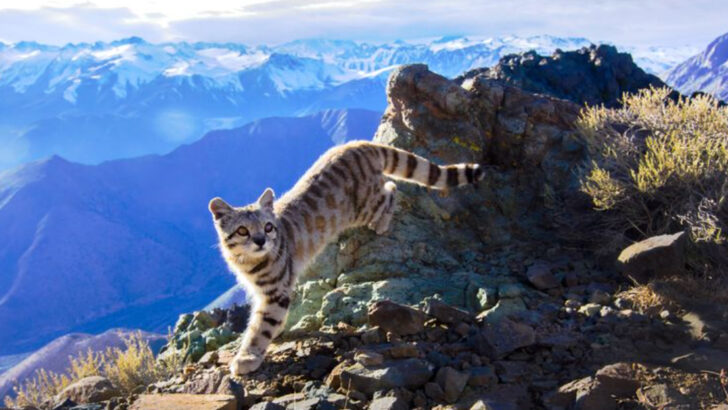You’re more likely to spot a ghost than see this wild cat in the flesh.
The Andean mountain cat is a shadow in the rocks—mysterious, rare, and nearly impossible to track. It lives high above the clouds, where the air is thin and the world feels ancient.
This isn’t your average feline. With its thick silver coat, ringed tail, and piercing gaze, it looks more like a creature from myth than a real animal. And yet, it prowls the harsh peaks of the Andes with silent precision.
Few have seen it. Fewer have studied it. But the secrets it holds? Worth every step into the clouds.
Let’s pull back the curtain on one of the rarest cats on Earth—ten wild facts, straight from the roof of South America.
Elusive and Rare
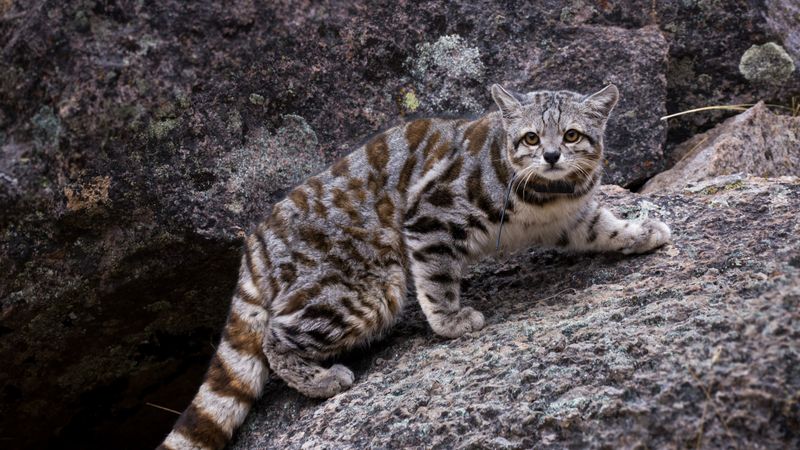
The Andean mountain cat is a master of elusiveness. It is one of the most rarely seen wild cats, with estimates suggesting there are fewer than 2,500 individuals left. This cat resides primarily in rugged terrains, making it difficult for researchers to study.
Their elusive nature is compounded by their nocturnal habits, adding to the challenge of spotting them. This rarity makes it a treasure for wildlife photographers and researchers alike.
Despite its scarcity, efforts are being made to better understand and conserve this unique feline species.
High Altitude Habitat
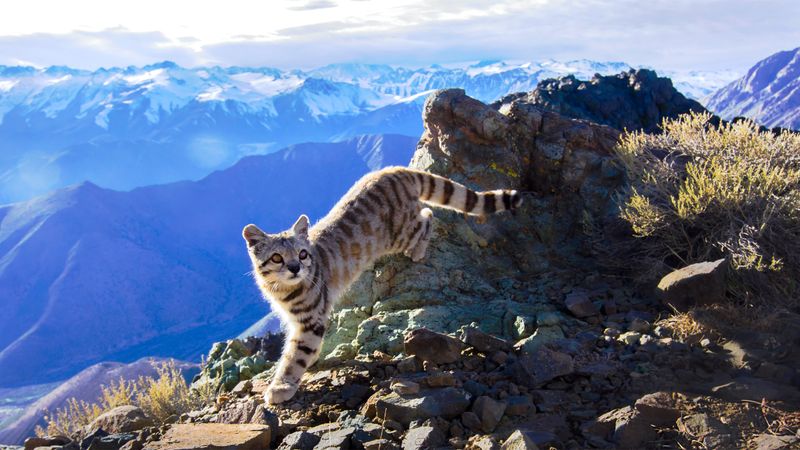
Thriving at altitudes between 3,000 and 4,800 meters, the Andean mountain cat calls some of the most challenging environments home. These altitudes are characterized by rocky terrains and sparse vegetation.
Their ability to survive in such a harsh climate is a testament to their resilience and adaptability. They have thick fur that helps them withstand the cold temperatures typical at such heights.
Observing these cats in their natural habitat offers insights into how life can persist in even the most demanding conditions.
Unique Physical Appearance
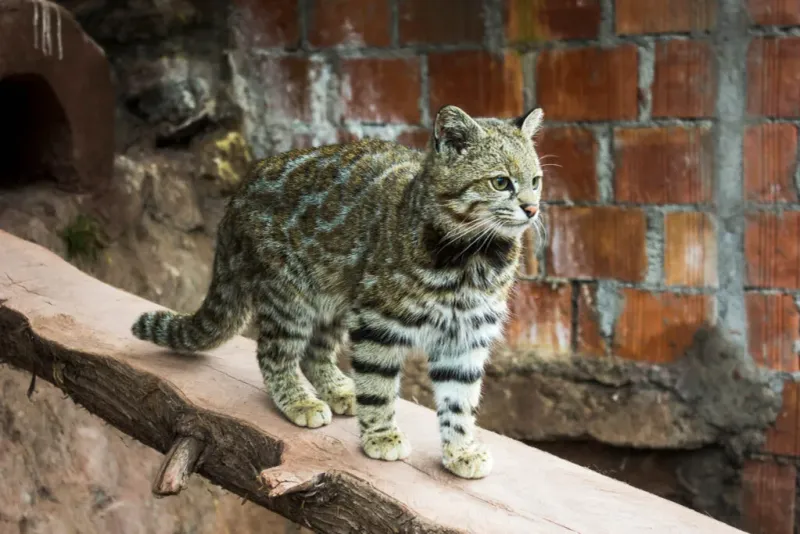
With its thick, soft fur and bushy tail, the Andean mountain cat is a sight to behold. Its fur is predominantly gray with distinct stripes and spots that offer excellent camouflage against the rocky Andean backdrop.
Their large, expressive eyes and rounded ears add to their unique appearance. This cat’s bushy tail, adorned with dark rings, is not only for show but also aids in maintaining balance as it navigates steep terrains.
Their distinctive look sets them apart from other felines and is an adaptation to their environment.
Diet and Hunting Habits
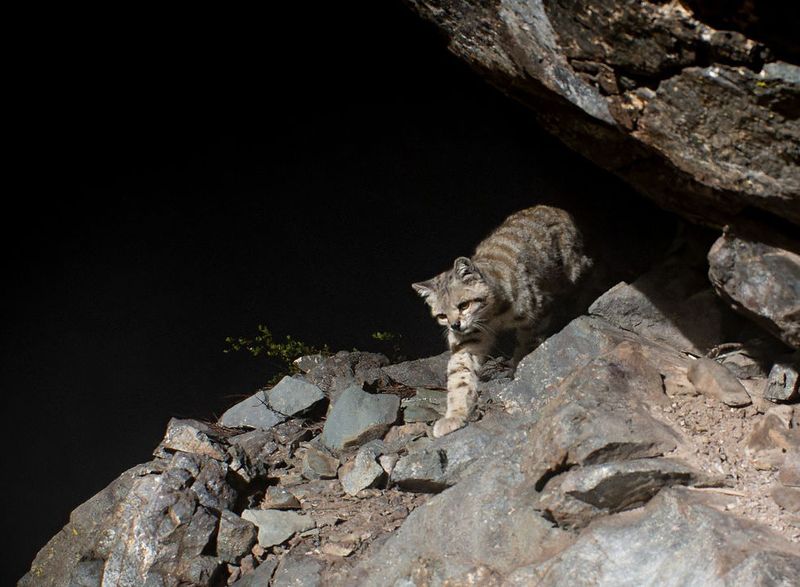
The Andean mountain cat’s diet mainly consists of small mammals, particularly the mountain viscacha, which is abundant in its habitat. These prey animals are adept at escaping predators, making the hunt a true test of skill.
Observing their hunting techniques reveals a calculated and patient predator. They rely heavily on stealth, using the rocky terrain to their advantage.
This diet is essential for their survival, providing the necessary nutrients to thrive in such a high-altitude environment.
Conservation Status
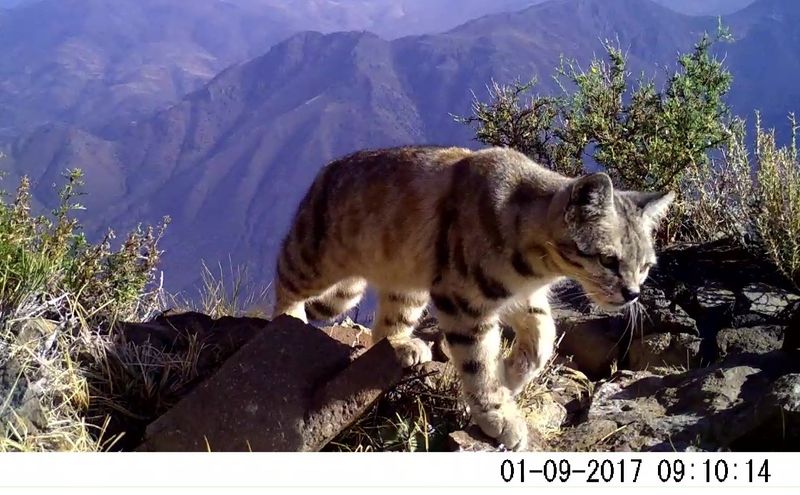
Classified as Endangered by the IUCN, the Andean mountain cat faces numerous threats. Habitat loss due to mining and agriculture is a significant concern, as is hunting for its fur.
Conservation efforts are in place to protect this elusive feline and its habitat. Organizations are working with local communities to promote awareness and reduce human-wildlife conflict.
Preservation of this species is vital, not only for biodiversity but also for maintaining the ecological balance of its high-altitude homeland.
Cultural Significance
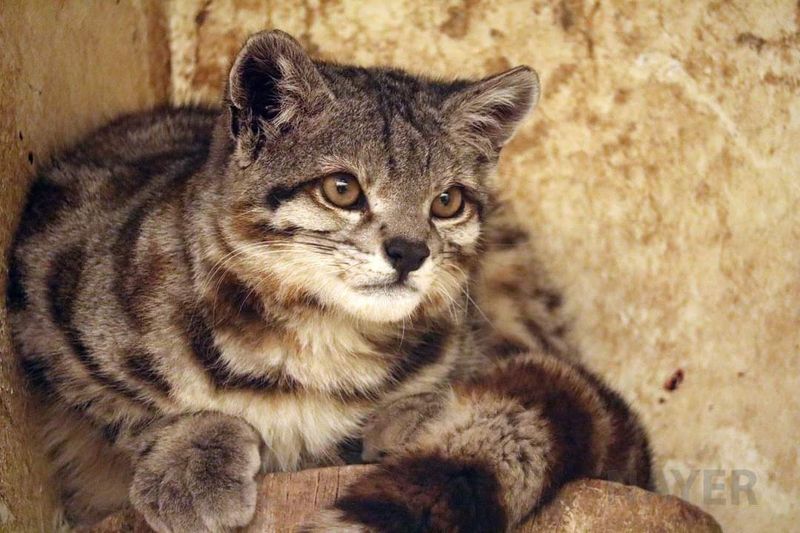
In the Andes, the mountain cat holds cultural significance among indigenous communities. It is often regarded as a symbol of the wilderness and revered in local folklore.
Various myths surround this elusive cat, portraying it as a guardian spirit of the high mountains. Such cultural beliefs play a role in conservation efforts, as they foster respect and protection for the species.
Understanding its cultural importance helps in creating effective conservation strategies that involve and benefit local communities.
Adaptations for Survival
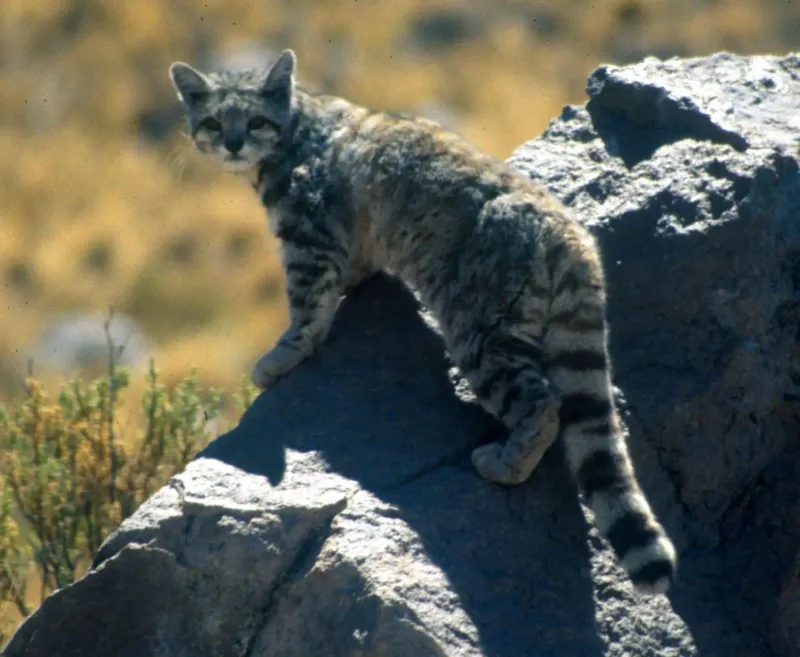
Survival in the Andes demands unique adaptations, and the Andean mountain cat does not disappoint. Its large paws and strong limbs enable it to traverse rocky landscapes with ease.
These cats exhibit remarkable jumping abilities, allowing them to bridge gaps between boulders. Their keen senses are crucial for detecting prey and avoiding threats.
These adaptations are not only fascinating but also essential for their survival in such a challenging environment, ensuring they remain one of the top predators in their habitat.
Reproductive Behaviors
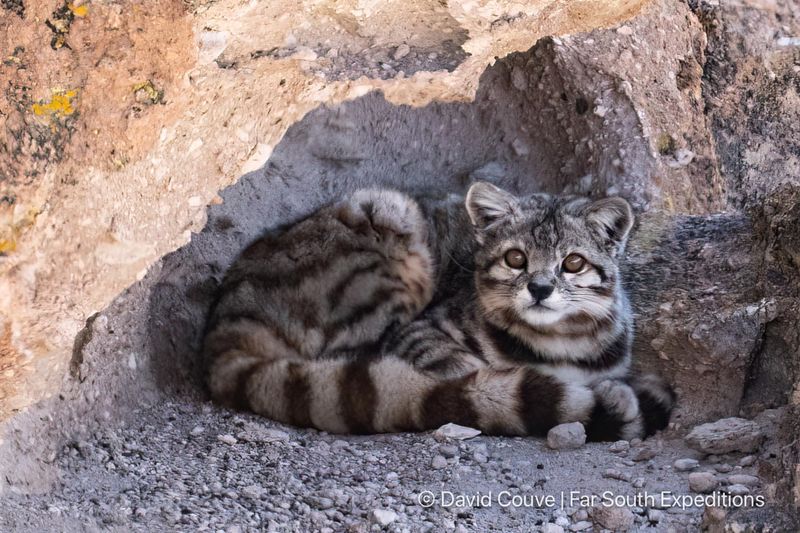
Little is known about the reproductive behaviors of the Andean mountain cat, but they are believed to have small litters of one to three kittens. These kittens grow rapidly, learning to navigate their environment under the mother’s watchful eye.
Due to the species’ elusive nature, observations in the wild are rare. Captive studies provide some insights, yet much remains shrouded in mystery.
Understanding their reproduction is key to conservation, as it affects population growth and sustainability in their harsh mountainous habitat.
Threats from Human Activity
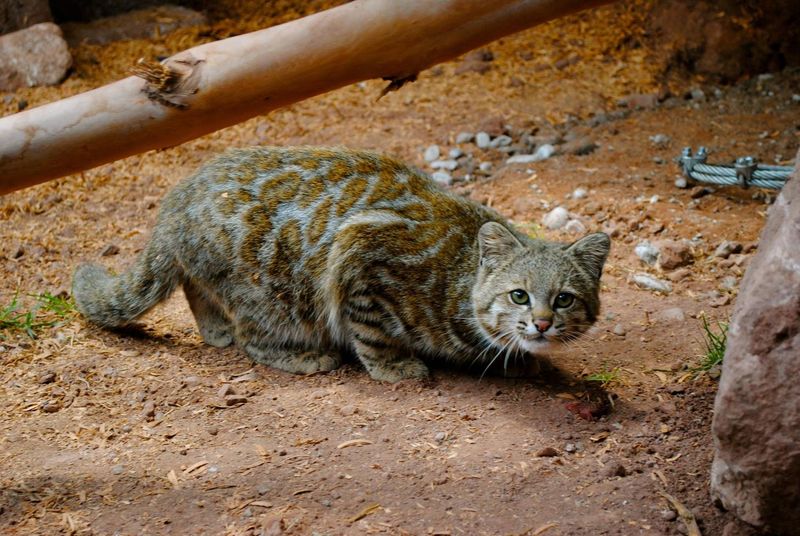
Human activities pose significant threats to the Andean mountain cat. Expansion of agriculture and mining encroaches upon their natural habitat, leading to habitat fragmentation.
Additionally, hunting poses a direct threat, as these cats are sometimes killed for their pelts. Conservationists work tirelessly to mitigate these threats by promoting sustainable practices.
Raising awareness about these issues is crucial for the species’ survival, emphasizing the need for harmonious coexistence between humans and wildlife.
Research and Study Efforts
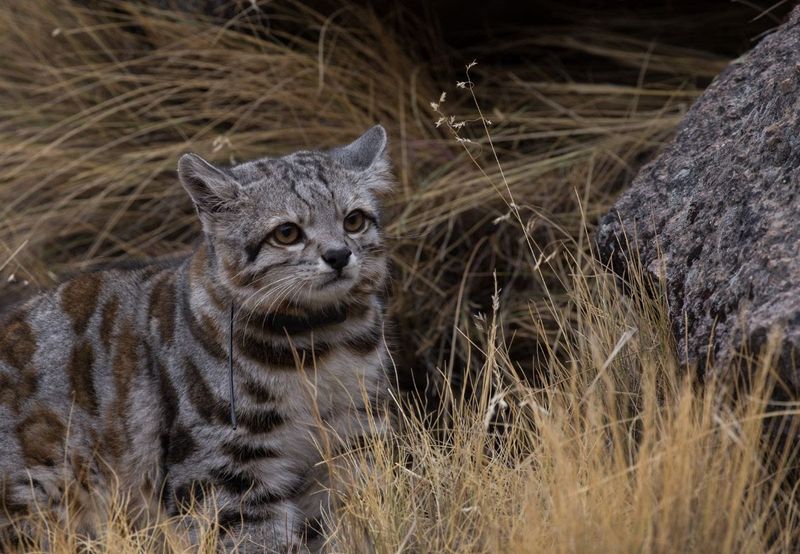
Studying the Andean mountain cat presents numerous challenges due to its elusive nature. Researchers employ various methods, including camera traps and GPS collars, to gather data on these cats.
These efforts aim to unravel the mysteries of their behavior, population dynamics, and ecological impact. Collaboration between international and local organizations enhances the effectiveness of these studies.
The knowledge gained from research is pivotal for developing informed conservation strategies, ensuring the survival of this remarkable species in the Andes.

